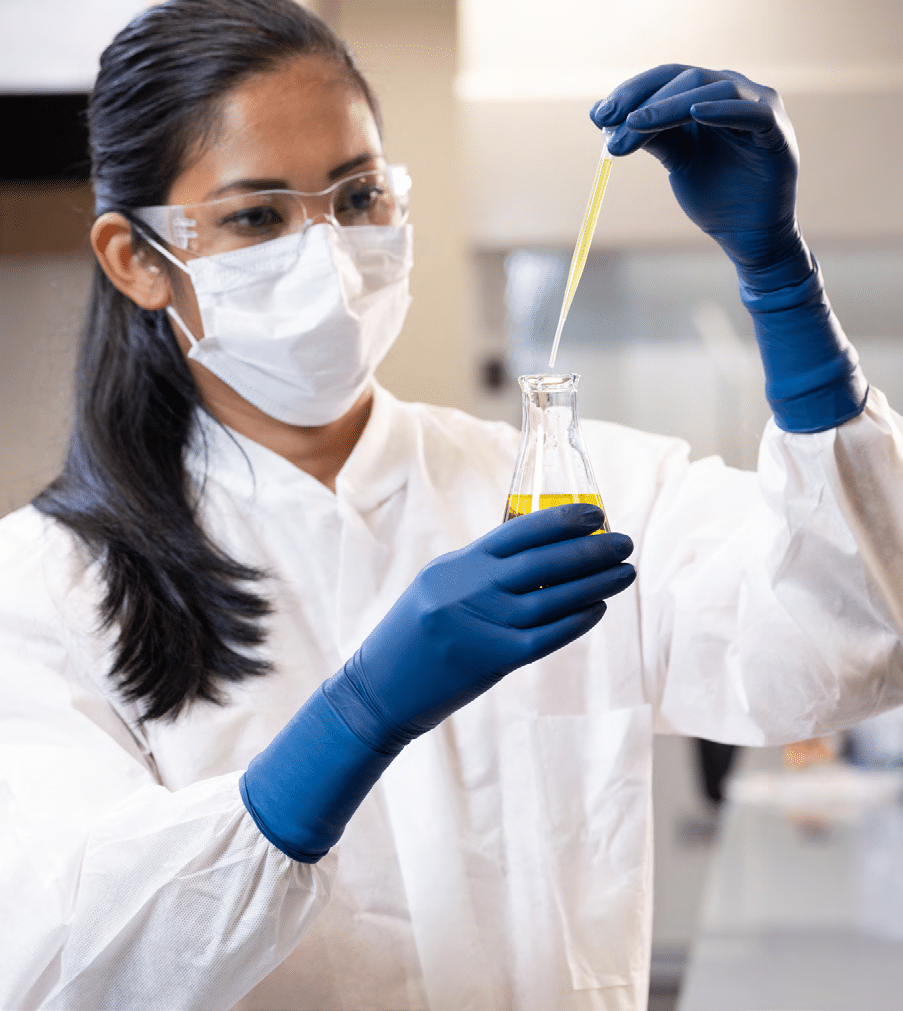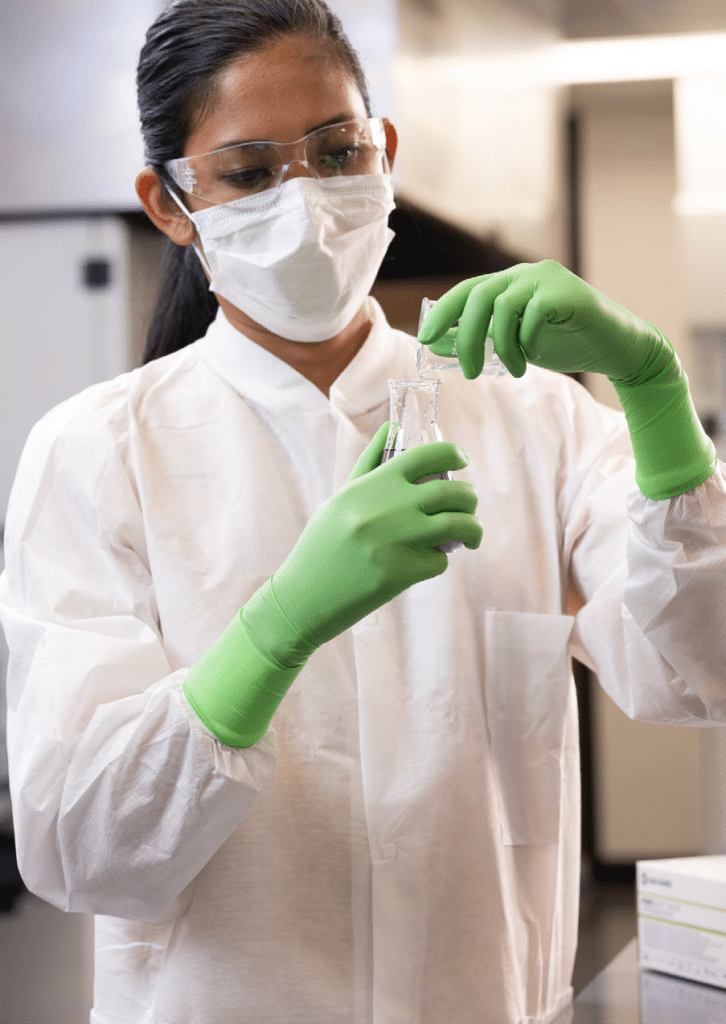PUREZERO*
Behind the Innovation
By: Linda Harvey, MS, LHRM, DFASHRM, president and founder of The Linda Harvey Group
Understanding Laboratory Safety
A laboratory is an environment equipped for experimental studies in science, clinical testing or investigative analytical methodology. Many laboratories are designed, constructed and operated to be controlled environments, which can include controlled temperatures, air flow, humidity and more when handling certain materials.
Specific standards of safety are often required due to the hazardous drugs and chemicals that laboratory workers are exposed to in these environments, such as chemotherapy drugs and antineoplastic agents, or biologics that have a potential degree of harm when handling them. As a result, controlled laboratory environments deploy safety measures through aseptic techniques and proper garbing that protect the final product, prevent cross contamination and safeguard workers from harmful exposure.
While rules of controlled laboratory environments require optimal safety, laboratory workers and leaders must also embrace a culture of safety and provide high quality personal protective equipment (PPE) for facilities to effectively ensure the protection of both their staff and final product.

High quality PPE plays a foundational role in building a safe laboratory environment, especially when workers are handling potentially dangerous chemicals, drugs and biologics.
Importance of a Workplace Culture that Prioritizes Safety
Creating a safe laboratory environment starts with culture, which encompasses the shared attitudes, values, goals and practices that characterize an organization and summarizes the way things are done in a particular facility. A culture of safety exists when an organization stresses the importance of maintaining high standards and most employees within the organization adopt these standards as shared values. Warning signs that a workplace may not have a strong culture of safety include low leadership involvement in encouraging safety practices or education; an increase in accidents and incidents; outdated or poorly functioning safety equipment; failed outside inspections; and low morale.
High quality PPE, leadership participation, encouragement of continuous learning, teammate accountability and ongoing support are the four most essential elements to build a culture of safety in a laboratory workplace. Leaders and workers can prioritize and build a culture of safety through the following methods:
-
- Cascading a culture of safety from the top down: Leaders have a responsibility to build safety into their workplace culture by weaving it into the organization’s mission, vision and values. These values should then be integrated into everyday work by having them posted in common areas of the break room, prominently displaying them on the company website and including them in the onboarding process for new hires. Workers can participate in self-inspections and leaders can motivate workers by developing creative ways to promote safety, such as through national awareness days.
-
- Implementing continuous learning to encourage a culture of safety: Continuous learning on safety can take many different forms – such as leadership sharing weekly or monthly safety tips, participating in continuing education courses on a regular basis, sponsoring an annual safety event with outside speakers and offering self-guided online programs or internal training sessions led by company leadership. Everyone has a different learning style, so providing and encouraging a variety of different learning opportunities for employees will result in better outcomes.
-
- How workers can hold themselves accountable for safety: To increase accountability for safety among staff, workers should adhere to and report adherence to a safety routine related to their particular lab duties. Additionally, utilizing job-specific safety checklists helps ensure no aspect of safety is forgotten or accidentally skipped over.

Cascading a culture of safety from the top down is one way to achieve optimum safety in the laboratory. Leaders are responsible for building and upholding safety into their organization’s mission, vision, values and everyday work.
PPE’s Role in Optimum Laboratory Safety
High quality PPE also plays a foundational role in building a safe laboratory culture as workers often handle dangerous chemicals, drugs and biologics that could cause harm. Given varying requirements of controlled laboratory environments, there is a need for a PPE protocol that meets the unique needs of each laboratory and its staff.
Workers in the laboratory may don gloves, hoods, caps, respiratory head gear, coveralls, overboots, face masks or safety goggles for protection. For laboratories, it is best that PPE meets stringent quality standards, is above industry average AQL (1.0) and excels in testing and traceability. When leadership provides laboratory workers with superior products, including PPE, it demonstrates their genuine commitment to worker safety, enhances morale and minimizes worker injury.
The Owens & Minor HALYARD* brand offers an expansive portfolio of products that provide solutions for a variety of laboratory needs and is committed to protecting laboratory workers through the manufacturing, sourcing and distribution of the highest quality PPE products. Such products include HALYARD* PUREZERO* Life Science Gloves, which ensure reliable protection on all fronts, delivering protection of scientific work integrity, user protection and supply reliability.
To prevent contamination and ensure worker protection in your laboratory, build a culture with safety at the center and ensure your employees have the right protective gear for their unique needs.
